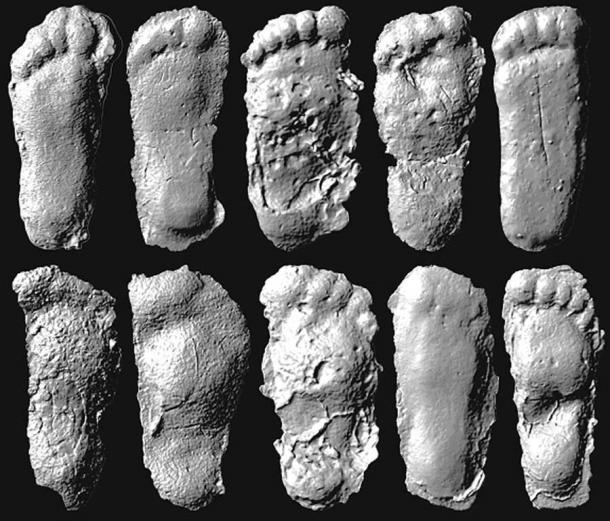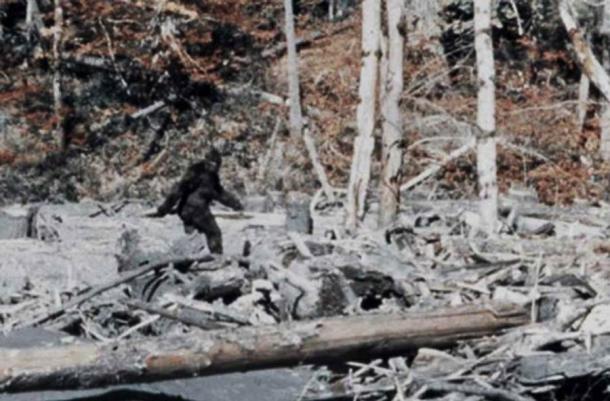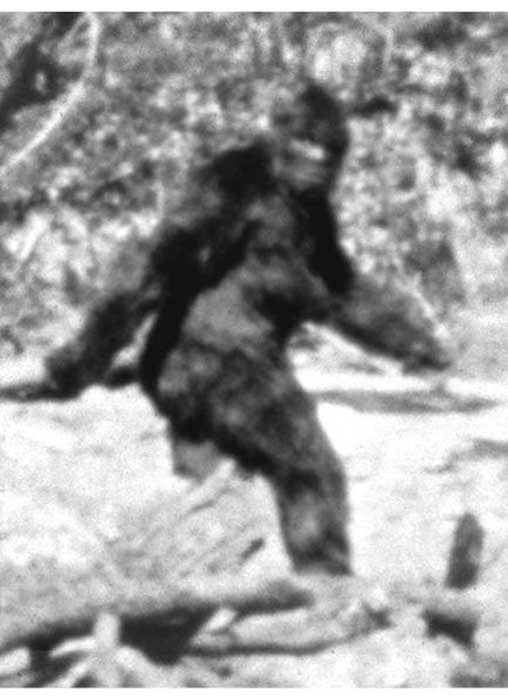Fact or fiction, Bigfoot has captured the world’s imagination after a road construction crew spotted giant 16-inch-long human footprints near Bluff Creek in northern California in 1958. The discovery seemed to provide evidence for the existence of the Sasquatch-like creatures of native American myth. Now, using advanced scientific methods, an expert team is re-examining the evidence for this elusive creature.
Ever since then, sightings of the creature have been reported at least once from every US single state over the past two decades. The latest was in 2018 by a woman who reported seeing what looked like a “a large pile of soggy grass,” as quoted in an article from that year in the Smithsonian Magazine .
The footprints were subsequently proved to be a fake when the children of a man named Ray Wallace revealed after his death in 2002 that they had been planted by him as a prank. By that time, however, far more important “evidence” of Bigfoot’s existence had been gathered. This was in the form of a 1967 video by Roger Patterson and Bob Gimlin of a giant furry creature with its sloped head and torso pushed forward, its upper back hunched, thigh muscles rippling and long arms swinging at its side.
The duo had set out to find the giant Bigfoot creature in the forests around the area where the footprints had been spotted. The grainy one-minute 16mm motion picture video, known as the Patterson-Gimlin film, has been the subject of a raging debate ever since it made its first public appearance.

Scans of Bigfoot footprint casts. (D. Meldrum / CC BY-SA 4.0 )
Arguments For and Against the Existence of Bigfoot
So how does the evidence stack up so far? A 2017 article in Ancient Origins makes a compelling case for examination of the film with an impartial and open mind. It argues that the evidence against the film is really no more than anecdotal claims and suspicions that Roger Patterson was an untrustworthy man; that Bigfoot was filmed in the same area that the fake footprints had been planted; and intellectual scepticism and arrogance that rejected the film outright without giving it the benefit of doubt.
Another argument against it is that Bob Heironimus from Yakima came forward years after the footage was released, claiming he wore the costume used to make the “fake” video, a claim that has been stoutly denied by Gimlin who is still alive.
On the other hand, four reasons are presented in favour of taking the claims of the film seriously. One, the film is in perfect focus and was processed to yield a perfectly exposed image, so it is lacking in neither quantity or quality. Two, while detractors of the film claim that the fact of the camera being hand-held and shaky makes its examination difficult, actually that is proof of its genuineness. Any doctoring of the film with special visual effects techniques would have required a lock-down camera on a tripod.
Three, the film can easily be subjected to new advanced forensic techniques by those who suspect its claims. Since the techniques didn’t exist in 1967, the makers of the film couldn’t have anticipated them and so have proofed it against them. However, the scoffers haven’t bothered to use these techniques to expose the film for fraud. Four, given the good resolution of the film, it can easily be determined if the movements and body proportions are those of a human wearing a fur costume or a genuine Bigfoot. In fact, the article argues, it shows to the contrary.

Bigfoot in the Patterson-Gimlin Film. ( YouTube Screenshot )
Dissecting the Bigfoot Film With Modern Technology
Now, using AI and computer vision algorithms, a team of experts set out to once again examine the claims of the Bigfoot film in the latest episode of The Proof Is Out There series on the History Channel. The task the team set itself was to dissect whether the Bigfoot of the film is really Bigfoot, or just someone dressed in a hairy suit.
According to Mail Online , Dr. Jeff Meldrum, professor of anatomy and anthropology at Idaho State University, explained: “We are here 50 years later because advances in technology have provided opportunities to consider the film in novel ways.” On Dr Meldrum’s team are also computer scientist Issac Tian and veteran Hollywood costume and special effects expert Bill Munns.
Although the original film is lost, the experts made 22 copies of existing duplicates and then used an AI program to integrate them. The images were stabilized using computer vision algorithms resulting in a much less shaky footage.
The experts then looked at how the creature’s foot interacted with the ground as it walked. They saw a flexing in the middle of the foot that is common in apes and not humans, and an upward turning of the toes that points to it being something other than a human in a fur costume. Moreover, the calf muscles are defined in a way that could not have been seen in a fur costume. Such costumes do not define the body, they just hang on the person wearing them, particularly the fur costumes of 1967.

“Patty” in VFC-2 Frame 354. (Public domain)
The Jury is Still Out On Authenticity Of Patterson-Gimlin Film
Besides this, how Patterson and Gimlin came across a human big enough to fill the suit—someone at least 7 feet tall (213 cm) and weighing between 700 and 800 pounds (317 to 362 kg)—is anybody’s guess. As it strolls past the camera, its eyes look directly at it, and according to Munns, the movement would have caused a skewing of the costume to one side, had there been one.
The muscles on the back of the neck look like those of an ape, according to Meldrum. “I am struck as an anatomist by the massive size of these trapezius muscles and their intermediate attachment on the back of the skull. This is not a human configuration.” Comparing the skull of the creature to that of australopithecine, an extinct early human species that lived in East Africa about three million years ago, Meldrum says: “All of the bony landmarks of Patty’s [the figure in the film] correlates with proportions seen in this skull.”
Though the episode seems to provide proof that the Patterson-Gimlin film deserves more than outright dismissal by the anthropological community, the jury is still out on its authenticity. Meanwhile, the appeal of the mythical wild man continues unabated, call him Bigfoot, Yeti, the Abominable Snowman or Sasquatch.
Top image: Mysterious Bigfoot figure in the forest. Source: Dave / Adobe Stock
By Sahir Pandey
Related posts:
Views: 0
 RSS Feed
RSS Feed
















 December 6th, 2021
December 6th, 2021  Awake Goy
Awake Goy  Posted in
Posted in  Tags:
Tags: 
















